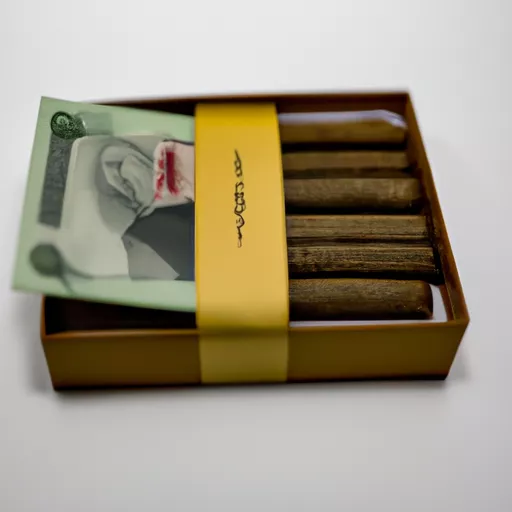little cigar price

As someone who enjoys the occasional cigar, I have always been intrigued by the concept of little cigars. They have gained popularity in recent years, offering smokers a different experience than traditional cigars. In this article, I will take a closer look at little cigars – their history, characteristics, and why they have become a favorite among cigar aficionados.
First of all, what exactly are little cigars? Unlike regular cigars which are large and can take up to an hour to smoke, little cigars are smaller in size. They are typically the size of a cigarette, making them more convenient and easier to smoke on the go. They are also made with different types of tobacco, resulting in a milder flavor compared to regular cigars.
Little cigars have been around for a long time, with origins dating back to the 1800s. In America, they were known as “Cigarettes of Tobacco” and were marketed primarily to women who were not allowed to smoke cigars at the time. However, it wasn’t until the 1950s that little cigars became popular among men, thanks to their affordable price and convenience.
Little cigars are made with the same types of tobacco as regular cigars, including wrapper, binder, and filler. However, the tobacco used in little cigars is often lower quality and less aged, resulting in a milder flavor. The wrapper is typically a homogenized tobacco leaf, similar to the material used in cigarettes, while the binder and filler may be made with a mixture of short and long filler tobacco leaves.
One of the main reasons little cigars have gained popularity is their affordability. They are often much cheaper than regular cigars, making them more accessible to a wider range of consumers. In addition, since little cigars are smaller in size, they require less tobacco to produce, resulting in a lower cost.
Another factor that sets little cigars apart from regular cigars is the way they are consumed. Unlike cigars, which are meant to be smoked slowly and savored, little cigars are often smoked like cigarettes – inhaling the smoke and exhaling through the nose. This results in a stronger hit of nicotine, making them more appealing to smokers who are looking for a quick and satisfying fix.
Little cigars also come in a variety of flavors, including traditional tobacco, menthol, cherry, vanilla, and more. This adds to their appeal, especially for those who may not enjoy the strong taste of regular cigars. However, it’s worth noting that the FDA has banned the use of flavored little cigars, except for menthol, as they are often marketed and targeted towards young people.
When it comes to little cigars, there are both pros and cons to consider. On the positive side, they are convenient, affordable, and come in a variety of flavors. They are also a good option for those who are new to smoking and may not be ready for a full-sized cigar. However, they also have their drawbacks. The lower quality tobacco used in little cigars means they may not have the same complex flavors and aromas as regular cigars. In addition, the fact that they are often smoked like cigarettes may not be appealing to traditional cigar smokers.
In recent years, little cigars have also faced criticism for their health effects. Just like cigarettes, they contain nicotine, which is highly addictive. While they may be marketed as a milder alternative to cigarettes, they can still have negative impacts on one’s health if consumed in excess.
With the rise in popularity of little cigars, there have been efforts to regulate their production and marketing. The FDA has implemented regulations on the packaging and advertising of little cigars, requiring warning labels and restricting certain flavors. However, some argue that more needs to be done to regulate the ingredients and production process of little cigars to protect consumers.
In conclusion, little cigars offer a unique smoking experience that is different from traditional cigars. They are affordable, convenient, and come in a variety of flavors, making them appealing to a wide range of consumers. However, they also have their downsides, including potential health risks and lower quality tobacco. Ultimately, it’s up to the individual to decide if little cigars are the right choice for them. But one thing is for sure, they have cemented their place in the market and will continue to be a topic of discussion among cigar enthusiasts.